 W
WThe cuisine of Algeria is influenced by Algeria's interactions and exchanges with other cultures and nations over the centuries. It is characterized by a wealth derived from both land and sea products. Conquests or demographic movement towards the Algerian territory were two of the main factors of exchanges between the different peoples and cultures. This cuisine is a Mediterranean and North African cuisine with Berber roots.
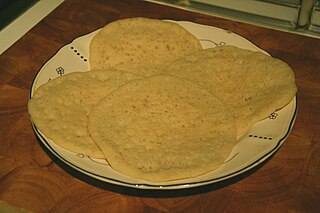 W
WBaghrir or beghrir (البغرير) is a pancake consumed in the Maghreb region. They are small, spongy and made with semolina or flour; when cooked correctly, they are riddled with tiny holes. The most common way to eat baghrir in Algeria and Morocco is by dipping them in a honey-butter mixture, but they can also be cut into wedges and served with jam. It is common to add raisins to the pancake as well. Baghrir are popular for breakfast, as a snack and for iftar during Ramadan.
 W
WBaklava is a layered pastry dessert made of filo pastry, filled with chopped nuts, and sweetened with syrup or honey. It was one of the most popular sweet pastries of Ottoman cuisine.
 W
WBorek or burek is a filled pastry made of a thin flaky dough such as filo with a variety of fillings, such as meat, cheese, spinach or potatoes. Boreks are mainly associated with the areas of the former Ottoman Empire, including the Balkans and the Caucasus, the Middle East, Eastern European and Central European countries, Northern Africa and Central Asia. A borek may be prepared in a large pan and cut into portions after baking, or as individual pastries. They are usually baked but some varieties can be fried. Borek is sometimes sprinkled with sesame or nigella seeds, and they may be served hot or cold.
 W
WChakhchoukha or chekhechoukha is a dish of Algerian cuisine, eaten often on festive celebrations, especially popular in the Aurès region. The dish consists of small pieces of rougag mixed with marqa, a stew.
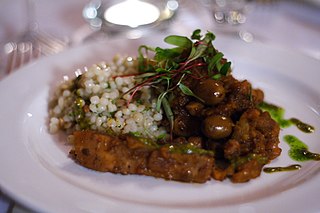 W
WChermoula or charmoula is a marinade and relish used in Algerian, Libyan, Moroccan and Tunisian cooking. It is traditionally used to flavor fish or seafood, but it can be used on other meats or vegetables.
 W
WChraime is a spicy fish stew with tomatoes from Libya. The name of the dish comes from the Arabic word for "hot".
 W
WCouscous is a North African dish of small steamed granules of rolled durum wheat semolina that is traditionally served with a stew spooned on top. Pearl millet, sorghum, Bulgur and other cereals can be cooked in a similar way in other regions and the resulting dishes are also sometimes called couscous.
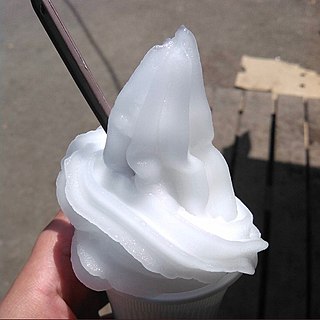 W
WCreponne is a traditional Algerian lemon sorbet that originates from Oran.
 W
WDate honey, date syrup, date molasses, Debes (Arabic: دِبس, pronounced [Dibss] or rub is a thick dark brown, very sweet fruit syrup extracted from dates. It is widely used in Middle Eastern cooking.
 W
WFarinata, socca, torta di ceci, or cecina is a type of thin, unleavened pancake or crêpe made from chickpea flour. It originated in Genoa and later became a typical food of the Ligurian Sea coast, from Nice to Sardinia and Elba islands. It is also typical in Gibraltar, where it is called calentita.
 W
WHarcha is a semolina bread native to the Middle Atlas in Morocco, and also found in Algeria.
 W
WHarissa is a Tunisian hot chili pepper paste, the main ingredients of which are roasted red peppers, Baklouti peppers (بقلوطي), spices and herbs such as garlic paste, caraway seeds, coriander seeds, cumin and olive oil to carry the oil-soluble flavors. Rose harissa, made with rose petals, is also made.
 W
WJalebi, also known as jilapi, jilebi, jilipi, zulbia, jerry, mushabak, or zalabia, is a popular Indian sweet snack. It is made by deep-frying maida flour batter in pretzel or circular shapes, which are then soaked in sugar syrup.
 W
WKalb el louz is a traditional semolina based Algerian dessert.
 W
WKroki is a traditional Algerian biscuit and a specialty in Algerian cuisine.
 W
WM'semen or msemen, is a traditional flatbread originally from the Maghreb, common to Algeria, Tunisia and Morocco. It is usually served with honey or a cup of aromatic morning mint tea or coffee. M'semen can also be stuffed with meat (khlea) or onion and tomatoes.
 W
WMakroudh is a cookie from the cuisines of the Maghreb and Malta. It is filled with dates and nuts or almond paste, that has a diamond shape – the name derives from this characteristic shape.
 W
WMatbukha is a Maghrebi dish of cooked tomatoes and roasted bell peppers seasoned with garlic and chili pepper. The name of the dish originates from Arabic and means "cooked" in Arabic. It is served as an appetizer, often as part of a meze table. Matbukha is popular across the Maghreb and in Israel, to where it was brought by Jewish immigrants from Morocco, Tunisia, Algeria, and Libya.
 W
WIn the Magrebi cuisine, Méchoui is a whole sheep or a lamb spit-roasted on a barbecue. The word comes from the Arabic word šawa, which means "grilled, roasted". This dish is very popular in North Africa.
 W
WMesfouf, or masfouf is an Algerian, Moroccan and Tunisian dish which is a variant of couscous with finely rolled semolina and butter or olive oil.
 W
WMouna, also known as Mona is an Algerian Jewish sweet bread of Sephardi origin, similar to challah, kubaneh or brioche, that is traditionally consumed for the Jewish holidays of Mimouna and Shabbat, which is commonly found today in France, and Israel, and has a sweet taste enriched with oil and eggs and often contains anise, sesame, orange, or other citrus.
 W
WMrouzia is one of the most important dishes of Moroccan cuisine. It is a sweet and salty meat tajine, combining a ras el hanout blend of spices with honey, cinnamon and almonds. It is also prepared in Tunisia, but in a different manner. An author mentions the name in Algeria, but for a different dish.
 W
WMuhallebi is a milk pudding commonly made with rice, sugar, milk and either rice flour, starch or semolina, popular as a dessert in the Middle East. The dessert is called Muhallebi in Turkey, but the Egyptian variant is called Mahalabia. Where as in Lebanon, Syria and Iraq, it is called Malabi.
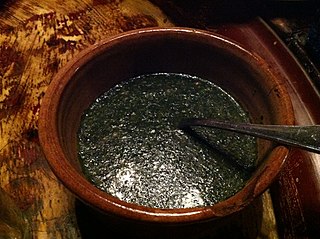 W
WMulukhiyah, molokheyya, molokhia or mulukhiyyah is the leaves of Corchorus olitorius, commonly known in English as denje'c'jute, nalta jute, tossa jute, jute mallow'. It is used as a vegetable. It is popular in Middle East, East African, west African and North African countries and is called “Saluyot” in the Philippines. Mulukhiyah is rather bitter, and when boiled, the resulting liquid is a thick, highly mucilaginous broth; it is often described as "slimy", rather like cooked okra. Mulukhiyah is generally eaten cooked, not raw, and is most frequently turned into a kind of soup or stew, typically bearing the same name as the vegetable in the local language. Traditionally mulukhiyah is cooked with chicken or at least chicken stock for flavor and is served with white rice, accompanied with lemon or lime.
 W
WPastilla is a North African meat or seafood pie made with warqa dough (ورقة), which is similar to filo. It is a specialty of Morocco and Algeria. It has more recently been spread by emigrants to France, Israel, and North America.
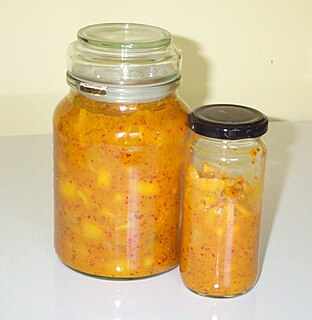 W
WPreserved lemon or lemon pickle is a condiment that is common in the cuisines of Indian subcontinent and North Africa. It's also found in 18th-century English cuisine.
 W
WRas el hanout or rass el hanout is a spice mix found in varying forms in Tunisia, Algeria, and Morocco. The name in Arabic means "head of the shop" and implies a mixture of the best spices the seller has to offer. Ras el hanout is used in many savory dishes, sometimes rubbed on meat or fish, or stirred into couscous, pasta or rice.
 W
WSeffa is a Maghrebi dish of sweetened semolina cuscus with butter, cinnamon, and almonds. It can also be made with rice or vermicelli. This dish is generally consumed at the end of a meal, before dessert. It is often served at traditional marriage ceremonies and family gatherings.
 W
WSemolina is the coarse, purified wheat middlings of durum wheat mainly used in making couscous, pasta, and sweet puddings. The term semolina is also used to designate coarse middlings from other varieties of wheat, and sometimes other grains as well.
 W
WSfenj is a Maghrebi doughnut: a light, spongy ring of dough fried in oil. Sfenj is eaten plain, sprinkled with sugar, or soaked in honey. It is a well-known dish in the Maghreb and is traditionally made and sold early in the morning for breakfast or in the late afternoon accompanied by tea—usually Maghrebi mint tea—or coffee. It is also called Khfaf in Algeria and other parts of the Maghreb, bambalouni in Tunisia, and sfinz in Libya.
 W
WShakshouka is a Maghrebi dish of eggs poached in a sauce of tomatoes, olive oil, peppers, onion and garlic, commonly spiced with cumin, paprika and cayenne pepper. According to Joan Nathan, shakshouka originated in Ottoman North Africa in the mid-16th century after tomatoes were introduced to the region by Hernan Cortés as part of the Columbian exchange.
 W
WSmen is a salted, fermented butter, and a traditional Yemeni dish. In Yemen, Yemenis prepare a special version of semneh (سمنة) which is smoked with aromatic herbs inside of a gourd in order to impart deeper flavour and aid in preservation. However, smen is also an important ingredient in Middle Eastern cuisine and North African cooking. It is produced using the butter made from the milk of sheep, goats or a combination of the two. The butter is brought to its boiling point for about 15 minutes, then skimmed, strained into a ceramic jar called a khabia, and salted before it curdles. Some have it as a practice to add roasted fenugreek seeds to the boiling butter, after which it is strained from the fenugreek seeds. Thyme is often added to it to provide a yeast and enzyme starter. Other plants or fruits can be used. The result is then aged, often in sealed containers. It is then traditionally buried in the ground for temperature stability purposes, just like cheese is left to mature in caves because they have cooler and more stable temperatures.
 W
WTaguella is a flat bread, the staple dish of Tuareg people living in the Sahara. It is a disk-shaped bread made from wheat flour and cooked buried underneath the hot sand and charcoal of a small fire. The bread is then broken up into small pieces and eaten with a meat sauce.
 W
WA tajine or tagine is a Berber dish, named after the earthenware pot in which it is cooked. It is also called maraq or marqa.
 W
WTorta de gazpacho is a type of torta, or flat bread, used to prepare a dish called gazpacho in La Mancha and Southeast Spain, including Murcia and parts of the autonomous community of Valencian.